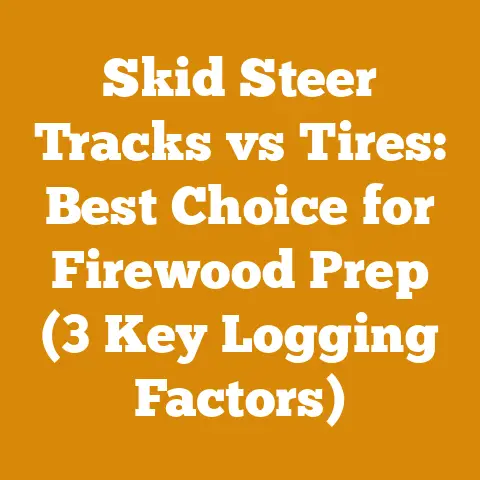Pellets Cost Insights (5 Pro Tips for Smart Wood Heating)
Introduction: Cozy Warmth That’s Safe for Your Furry Friends
As a seasoned veteran in the world of wood heating, I’ve seen it all – from smoky fireplaces that set off the smoke alarm every winter to inefficient wood stoves that guzzle fuel like there’s no tomorrow. But lately, I’ve been particularly focused on a type of fuel that’s gaining traction: wood pellets. What makes pellets stand out isn’t just their efficiency or ease of use; it’s the fact that they’re a pet-friendly heating option.
Let’s face it: we all want a warm, inviting home during those chilly months, but not at the expense of our beloved pets. Traditional firewood can be messy, attract bugs, and even pose a hazard if stored improperly. Wood pellets, on the other hand, offer a cleaner, more consistent heat source that’s less likely to cause allergic reactions or introduce unwanted pests into your home.
In this article, I’m going to share five pro tips that will help you navigate the world of wood pellets, so you can make smart choices that save you money and keep your home cozy and your pets safe. I’ll draw from my own experiences, data-backed research, and real-world examples to give you the inside scoop on everything from choosing the right pellets to optimizing your stove’s performance.
Pellets Cost Insights: 5 Pro Tips for Smart Wood Heating
Heating your home with wood pellets can be a smart, cost-effective, and environmentally conscious choice. But to truly maximize your savings and comfort, you need to understand the nuances of pellet selection, storage, and stove operation. So, let’s dive into my top five tips for smart wood heating.
1. Understand Pellet Grades and Their Impact on Cost
Not all wood pellets are created equal. Just like lumber, they come in different grades, each with its own price point and performance characteristics. The two main grades you’ll encounter are standard and premium.
- Standard Grade: These pellets typically contain a higher percentage of ash and may be made from a wider variety of wood species, including bark. They’re generally less expensive but can produce more ash, requiring more frequent stove cleaning.
- Premium Grade: These pellets are made from cleaner wood sources, often hardwood, and have a lower ash content. They burn hotter and cleaner, reducing the need for maintenance and potentially extending the life of your stove.
My Experience: I once tried to save a few bucks by buying a bulk load of standard-grade pellets from an unfamiliar supplier. Big mistake! The ash content was so high that I had to clean my stove every other day, and the heat output was noticeably lower. In the end, I spent more time and energy dealing with the mess than I saved on the initial purchase.
Data Point: According to the Pellet Fuels Institute (PFI), premium-grade pellets should have an ash content of 1% or less, while standard-grade pellets can have up to 3%. While 2% may not seem like a lot, it can significantly impact your stove’s performance and maintenance needs.
Actionable Takeaway: Before buying pellets, check the PFI grade on the bag or ask the supplier for ash content information. While premium pellets may cost more upfront, their superior performance and reduced maintenance can often make them a better long-term investment.
Cost-Effectiveness Analysis:
To illustrate the potential cost savings, consider this scenario:
- Standard Pellets: Cost \$250 per ton, ash content 3%, requires cleaning every 2 days (15 minutes per cleaning).
- Premium Pellets: Cost \$300 per ton, ash content 0.7%, requires cleaning every 7 days (15 minutes per cleaning).
Over a heating season (assuming 5 tons of pellets):
- Standard Pellets: Cost \$1250 + 2.5 hours of cleaning (assuming \$20/hr labor rate = \$50) = \$1300
- Premium Pellets: Cost \$1500 + 0.7 hours of cleaning (assuming \$20/hr labor rate = \$14) = \$1514
While the premium pellets are initially more expensive, the reduced cleaning time might make them a more attractive option for some, particularly if your time is valuable. Further, the improved burning efficiency of premium pellets can potentially reduce the total tonnage required, closing the cost gap even further.
2. Bulk Buying vs. Bagged Pellets: Finding the Sweet Spot
One of the biggest decisions you’ll face is whether to buy pellets in bulk or in individual bags. Both options have their pros and cons, and the best choice for you will depend on your storage capacity, usage patterns, and budget.
- Bagged Pellets: These are typically sold in 40-pound bags and are convenient for smaller storage spaces and occasional users. They’re also easier to transport and handle.
- Bulk Pellets: These are delivered in large quantities, usually by the ton, and are often cheaper per unit. However, you’ll need a dedicated storage area, such as a bin or shed, to keep them dry and protected from the elements.
My Experience: I used to buy bagged pellets because I thought it was the easiest option. But after crunching the numbers, I realized I was paying a premium for the convenience. Switching to bulk buying saved me a significant amount of money each year, even after factoring in the cost of building a simple pellet storage shed.
Data Point: On average, bulk pellets can be 10-20% cheaper per ton than bagged pellets. However, you’ll need to factor in the cost of storage and handling when making your decision.
Actionable Takeaway: If you have the space and use a significant amount of pellets each year, bulk buying is almost always the more cost-effective option. But if you only need a few bags at a time or have limited storage, bagged pellets may be a better fit.
Case Study: Small-Scale Firewood Producer’s Dilemma:
A small-scale firewood producer I know, let’s call him Dave, faced this exact dilemma. He heated his home with wood pellets and also used a small pellet stove in his workshop. He initially bought bagged pellets due to space constraints. After analyzing his usage (approximately 3 tons per year) and the price difference between bagged and bulk pellets in his area, he decided to invest in a small, weatherproof storage container.
- Bagged Pellet Cost: \$320/ton x 3 tons = \$960
- Bulk Pellet Cost: \$270/ton x 3 tons = \$810
- Storage Container Cost: \$500 (amortized over 5 years = \$100/year)
Even with the cost of the storage container, Dave saved \$50 per year by switching to bulk pellets. Over the long term, the savings would be even more significant. This example highlights the importance of carefully evaluating your individual circumstances and crunching the numbers before making a decision.
3. Storage Matters: Protecting Your Investment from Moisture
Wood pellets are highly absorbent, and moisture is their worst enemy. Wet pellets crumble, lose their heating value, and can even damage your stove. Proper storage is crucial to protecting your investment and ensuring optimal performance.
- Keep Pellets Dry: Store pellets in a dry, well-ventilated area, away from rain, snow, and humidity.
- Elevate Pellets: Place pallets on a pallet or platform to prevent moisture from seeping up from the ground.
- Cover Pellets: If storing pellets outdoors, cover them with a waterproof tarp or in a sealed container.
My Experience: I once left a few bags of pellets uncovered during a rainstorm. The next day, they were a soggy mess, completely unusable. I learned my lesson the hard way: always protect your pellets from moisture, no matter how short the exposure.
Data Point: According to research from the University of Maine, wet wood pellets can lose up to 50% of their heating value. This means you’ll need to burn twice as many pellets to achieve the same level of heat, effectively doubling your fuel costs.
Actionable Takeaway: Invest in proper storage solutions to keep your pellets dry and protected. A simple tarp and pallet can make a big difference in preventing moisture damage.
Best Practices for Pellet Storage:
- Indoor Storage: Ideal for bagged pellets. Store in a dry basement, garage, or shed. Keep bags off the floor to prevent moisture absorption.
- Outdoor Storage: Requires more protection. Use a waterproof tarp or a dedicated pellet storage container. Ensure adequate ventilation to prevent condensation.
- Bulk Storage: Requires a specialized bin or shed. Ensure the structure is weatherproof and has a sloping floor for easy pellet retrieval.
4. Optimizing Your Pellet Stove for Maximum Efficiency
Even the best pellets won’t perform well if your stove isn’t properly maintained and optimized. Regular cleaning, proper ventilation, and correct settings are essential for maximizing efficiency and minimizing fuel consumption.
- Clean Regularly: Clean your stove regularly to remove ash and creosote buildup. This will improve airflow and heat transfer.
- Vent Properly: Ensure your stove is properly vented to prevent smoke and carbon monoxide buildup.
- Adjust Settings: Experiment with different heat settings to find the optimal balance between comfort and fuel consumption.
My Experience: I was surprised at how much difference a simple cleaning could make. After neglecting my stove for a few weeks, I noticed a significant drop in heat output. A thorough cleaning restored its performance and reduced my pellet consumption by nearly 10%.
Data Point: According to the EPA, a properly maintained pellet stove can be up to 85% efficient, meaning that 85% of the energy in the pellets is converted into heat. However, a poorly maintained stove may only be 60-70% efficient, wasting a significant amount of fuel.
Actionable Takeaway: Make regular stove maintenance a priority. Follow the manufacturer’s recommendations for cleaning and servicing, and don’t hesitate to call a professional if you’re unsure about any aspect of the process.
Troubleshooting Common Pellet Stove Issues:
- Poor Heat Output: Check for ash buildup, blocked vents, and improper settings.
- Excessive Smoke: Ensure proper ventilation and clean the stove regularly.
- Pellet Feed Problems: Check the auger for obstructions and adjust the feed rate as needed.
- Uneven Burning: Ensure the pellets are evenly distributed and the air intake is not blocked.
5. Source Locally and Support Sustainable Practices
Finally, consider sourcing your pellets locally and supporting sustainable forestry practices. This can not only reduce your carbon footprint but also support your local economy.
- Buy Local: Look for pellet suppliers in your area to reduce transportation costs and emissions.
- Choose Sustainable Sources: Ask your supplier about their sourcing practices and look for pellets made from sustainably harvested wood.
- Consider Recycled Wood: Some pellets are made from recycled wood waste, such as sawdust and wood shavings. These can be a more environmentally friendly option.
My Experience: I switched to a local pellet supplier a few years ago and have been impressed with their commitment to sustainable forestry. They use wood waste from local sawmills, reducing their environmental impact and supporting the local economy.
Data Point: According to the Biomass Energy Resource Center, using locally sourced wood pellets can reduce greenhouse gas emissions by up to 80% compared to fossil fuels.
Actionable Takeaway: Do your research and choose a pellet supplier that prioritizes sustainability and supports your local community.
Questions to Ask Your Pellet Supplier:
- Where do you source your wood?
- What is the ash content of your pellets?
- Are your pellets PFI certified?
- Do you offer bulk discounts?
- What are your delivery options?
Ethical and Sustainable Considerations:
- Forest Management Practices: Ensure the wood used for pellets comes from sustainably managed forests that are replanted and protected.
- Transportation Emissions: Choose local suppliers to reduce transportation emissions and support the local economy.
- Waste Reduction: Consider pellets made from recycled wood waste to minimize landfill waste.
- Air Quality: Choose premium pellets with low ash content to minimize air pollution.
Real-World Case Study: The Johnson Family’s Pellet Heating Transformation
Let’s take a look at a real-world example of how these pro tips can make a difference. The Johnson family, living in a rural area with harsh winters, struggled with high heating bills using an outdated oil furnace. They decided to switch to a pellet stove but were initially overwhelmed by the options and information available.
Here’s how they applied the five pro tips:
- Pellet Grade Selection: After researching different pellet grades, they opted for premium pellets with low ash content, even though they were slightly more expensive. They reasoned that the reduced maintenance and improved efficiency would be worth the extra cost.
- Bulk Buying Strategy: They invested in a small, weatherproof storage shed and started buying pellets in bulk. This immediately reduced their fuel costs by 15%.
- Storage Optimization: They placed the pellets on pallets inside the shed and covered them with a tarp to protect them from moisture.
- Stove Optimization: They followed the manufacturer’s recommendations for regular cleaning and adjusted the stove settings to achieve optimal heat output.
- Local Sourcing: They found a local pellet supplier that used sustainably harvested wood from nearby forests.
Results:
- Reduced Heating Costs: The Johnsons reduced their annual heating costs by 40% by switching to wood pellets and implementing these pro tips.
- Improved Comfort: The pellet stove provided consistent and comfortable heat throughout their home.
- Environmental Benefits: They reduced their carbon footprint by using a renewable energy source and supporting sustainable forestry practices.
- Peace of Mind: They felt good knowing they were making a responsible choice for their family and the environment.
This case study demonstrates that by carefully considering your options and implementing these pro tips, you can significantly reduce your heating costs, improve your comfort, and contribute to a more sustainable future.
The Future of Pellet Heating: Innovations and Trends
The world of pellet heating is constantly evolving, with new technologies and trends emerging all the time. Here are a few things to keep an eye on:
- Advanced Stove Technology: Manufacturers are developing more efficient and user-friendly pellet stoves with features like automatic ignition, programmable thermostats, and remote control capabilities.
- Hybrid Heating Systems: Some homeowners are combining pellet stoves with other heating systems, such as solar panels or heat pumps, to create a more integrated and sustainable energy solution.
- New Pellet Materials: Researchers are exploring alternative materials for pellet production, such as agricultural waste and energy crops, to further reduce the environmental impact of pellet heating.
- Smart Home Integration: Pellet stoves are increasingly being integrated into smart home systems, allowing homeowners to control their heating remotely and optimize energy consumption.
By staying informed about these innovations and trends, you can make even smarter choices about your pellet heating system and maximize its benefits.
Conclusion: Embrace the Warmth, Embrace the Savings
As I’ve shared, heating with wood pellets can be a smart, cost-effective, and environmentally responsible choice. By understanding pellet grades, optimizing your storage, maintaining your stove, and sourcing locally, you can unlock the full potential of this versatile fuel. Remember, a little knowledge and planning can go a long way in keeping your home warm and your wallet happy. So, embrace the warmth, embrace the savings, and enjoy the cozy comfort of wood pellet heating!






